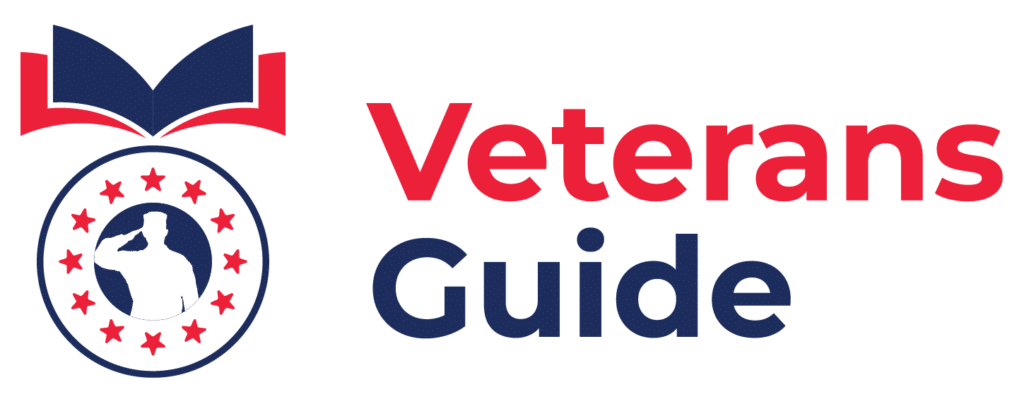Home » VA Home Loans » VA Home Loan Benefits
VA Home Loan Benefits
If you are an eligible veteran, service member, or surviving spouse, you can apply for a VA home loan to buy a new property. You can also use the loan to refinance an existing mortgage.
For many veterans, owning a home can feel impossible due to high costs and credit limits. Meanwhile, down payments and loan requirements make the process feel unnecessarily complicated. However, the Department of Veterans Affairs offers VA home loan benefits that can open the door to homeownership.
The VA loan program offers easier approval, lower interest rates, lenient credit requirements, and no down payment, making homeownership more accessible for veterans and active-duty service members. Veterans Guide provides information, resources, and guidance to assist you with the next steps. We can help you understand the benefits available and determine whether you qualify.
What Is a VA Home Loan?
Created in 1944, the VA home loan program is a government-backed mortgage program that helps veterans become homeowners. The VA’s home loan program assists veterans with buying, building, or improving a home or refinancing a current home loan.
VA home loans are issued by private lenders such as banks, mortgage companies, and credit unions. However, the VA guarantees a portion of the loan amount, thus encouraging lenders to offer better terms.
You must meet the private lender’s loan guidelines and have sufficient credit to obtain a loan. In addition, you must meet VA loan eligibility criteria. Once you’re eligible, you can use this benefit for a range of housing needs. That includes buying a single-family home or even a mobile home.
Top VA Home Loan Benefits
For veterans or service members, VA loans offer many advantages and are more flexible than traditional options. You get to enjoy lower interest rates and flexible credit requirements. You may qualify for a no-down-payment mortgage.
The following are some of the key VA home loan benefits:
No Down Payment Required
Most veterans can buy a home without a down payment. This is one of the biggest advantages of VA loans. Many private loans require 3% to 20% upfront. A VA loan lets you skip that. In fact, nearly 90% of loans backed by the VA don’t require a down payment. This VA program opens doors for buyers with limited income and savings. For many families, that means buying sooner.
Lower Interest Rates
Since the VA backs the mortgages, lenders can offer competitive interest rates. Banks and mortgage companies charge veterans lower rates for VA loans than conventional loans. Therefore, you can save money in the long run, particularly over the term of a 30-year loan.
A lender would typically require the borrower to have an outstanding credit score and history to get an equivalent interest rate for a conventional loan.
In addition, VA home loan closing costs are usually lower than conventional loan costs. This is because the VA restricts lender origination fees to about 1% of no-down-payment mortgages.
No Private Mortgage Insurance
You don’t need private mortgage insurance, or PMI, with a VA loan. PMI protects lenders if borrowers default on loan payments. Lenders require PMI on conventional loans if the borrower puts down less than 20% of the home’s value.
PMI can add hundreds to your monthly payment. Not having to pay PMI makes monthly costs more manageable and lowers the total cost of homeownership.
Limited Closing Costs
All mortgages come with closing costs. The good news? Lenders can’t overcharge you. The VA limits what lenders can charge, keeping VA home loan closing costs low.
Sellers can also cover some of your fees. VA borrowers can ask sellers to cover loan-related closing costs and up to 4% in concessions, including:
- Origination fees
- Buyer-broker fees
- Discount points
- VA funding fee
There’s no guarantee the seller will agree to your request. Still, you can certainly ask during negotiations.
More Lenient Credit Requirements
A lower credit score doesn’t always mean denial. VA loan credit requirements are often more forgiving.
Even if you have bad credit, you may still qualify. The VA itself has no minimum credit score requirement. Lenders, on the other hand, may review your full financial picture and accept lower credit scores.
These lenient credit requirements make it easier for military homebuyers to access VA loans after a bankruptcy or foreclosure.
No Prepayment Penalty
Paying some types of loans early can lead to prepayment penalties because financial institutions miss the chance to collect interest payments. Such penalties are a way for lenders to recoup some of that money.
VA loans do not impose prepayment penalties, giving borrowers the flexibility to settle their loans ahead of schedule without incurring additional charges.
This freedom matters if your income changes. It also helps if you sell or refinance later. You won’t get stuck with surprise costs.
Reusable Benefit
Whether you’re on active duty or served in the military 25 years ago, you can use VA loan benefits multiple times. After paying off one loan, you can qualify again for a loan to buy, build, or refinance a home. This reusable benefit supports veterans’ housing needs, reflecting the VA’s commitment to those who served.
Assumable Loan Option
With a VA loan assumption, a buyer can take over your mortgage instead of obtaining one of their own. This applies even if the buyer isn’t a veteran, provided they meet the VA’s and servicer’s guidelines.
So, if you need to sell your home, the buyer will assume the loan and current interest rate. VA loan assumptions can benefit veterans, particularly if interest rates are high.
Other Perks of the VA Home Loan Program
The benefits don’t stop at the loan. The VA offers additional protections to active military members and veterans.
Help for Borrowers in Default
If you’re struggling with payments, you aren’t alone. The VA offers help through financial counseling and default assistance. That support could help you avoid foreclosure.
The veteran housing allowance program is a perfect example. The VA offers housing grants to veterans with 100% disability ratings. These programs offer housing to permanently disabled veterans, assisting them in achieving independence. Veterans can use the allowance to buy, build, or improve their homes to accommodate their disabilities.
Compare VA Loan Benefits to Conventional Loans
Here’s a clear comparison of VA and conventional loans, summarizing the cost and benefit differences.
| Feature | VA Loan | Conventional Loan |
|---|---|---|
| Down Payment | $0 required—100% financing available | Typically, 3% to 20% required, depending on credit and loan type |
| Mortgage Insurance | No PMI required | PMI is required if the down payment is less than 20%. |
| Interest Rates | Lower. VA loans often have competitive rates | Higher. Rates depend on credit and market conditions. |
| Credit Score Requirements | No VA-set minimum | Minimum typically 620, with stricter requirements |
| Eligibility | Military service required—active duty, veterans, National Guard, etc. | Open to all qualified borrowers. |
| Prepayment Penalty | None | Sometimes, depending on the lender’s terms |
| Loan Assumption | Yes, the buyer can assume a current VA loan, possibly at a lower rate. | Rare—new financing for buyer, possibly with less favorable terms |
| Property Requirements | Primary residences only | Primary residences, second homes, and investment properties |
VA loans win in nearly every category. They cost less upfront and save money in the long term.
Also, remember that higher disability ratings increase the disability benefits available to you. Use our VA disability calculator to see potential benefits, including back pay estimates. Check the VA disability pay dates for 2025 to find out when to expect your money.
Ready To Apply? Here’s What To Do Next
VA home loan benefits can make homeownership more accessible for veterans and active-duty service members. You’ve earned this opportunity.
Start by checking your VA loan eligibility. Then, speak with a lender who understands your needs.
Client Reviews
 ANN WILLIAMS
ANN WILLIAMS  SHELLY DONNETT'E
SHELLY DONNETT'E Want to Increase Your VA Rating?



